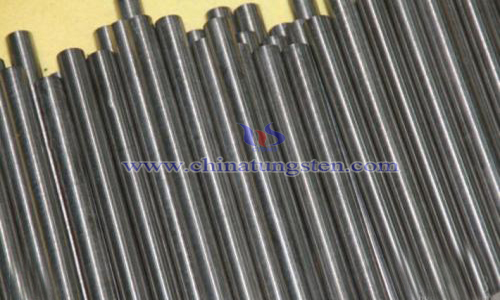Aluminum-based Tungsten Boride Composites
- Details
- Category: Tungsten Information
- Published on Sunday, 23 June 2019 22:50
There are a large number of X, gamma rays and neutrons in the radiation field environment of nuclear power plants and nuclear power plants. In order to ensure absolute safety, these X, gamma rays and neutrons need high-density radiation shielding materials. At present, the commonly used materials are lead-boron polyethylene, boron-containing polypropylene, cadmium plate, boron steel, tungsten-based heavy alloy, boron carbide and aluminium-based boron carbide. The above materials are only lead-boron polyethylene. Material can shield x, gamma rays and neutrons at the same time. Other materials can only shield one of the x, gamma rays or neutrons.

Researchers have developed an aluminium-based tungsten boride composite material, which is sintered from aluminium powder and tungsten boride. It has good x-ray, gamma-ray and neutron shielding properties. The technical scheme is as follows:
(1)The preparation steps of raw material powder: 950g pure aluminium powder with fineness of 0.5 um tungsten boride powder and 75 um boride powder were mixed evenly, and 1000g mixed powder was obtained in 6 hours.
(2)Hot isostatic pressing process: the hot isostatic pressing blank is obtained by filling the mixture powder into the package, vacuum pumping temperature is 200 ℃, sealing and hot isostatic pressing treatment. The pressing pressure is 70 MPa, the temperature is 400 ℃ and the holding time is 1.5 hours.
(3)Processing steps: the hot isostatic pressing blank is removed from the cover and processed according to the requirements of the finished drawings to obtain the processed blank;
(4)Surface treatment step: The finished product of Aluminum-based tungsten boride composite material is obtained by shot peening with glass beads. The finished product can be used for radiation shield.
The results show that aluminum-based tungsten boride composites have the characteristics of high relative density, good properties of X-ray, gamma-ray and neutron shield, and can be used in radiation protection fields such as nuclear power plants and nuclear power plants. The Aluminum-based tungsten boride composites prepared by the above methods have a relative density greater than 99.5%, room temperature tensile strength greater than 300 MPa, and strong yield strength. The process is relatively easy and suitable for industrial production with a degree greater than 200 MPa and elongation greater than 5%.
- Tungsten Manufacturer & Supplier, Chinatungsten Online: www.chinatungsten.com
- Tungsten News & Prices of China Tungsten Industry Association: www.ctia.com.cn
- Molybdenum News & Price: news.molybdenum.com.cn
- Tel.: 86 592 5129696; Fax: 86 592 5129797; Email: sales@chinatungsten.com



 sales@chinatungsten.com
sales@chinatungsten.com